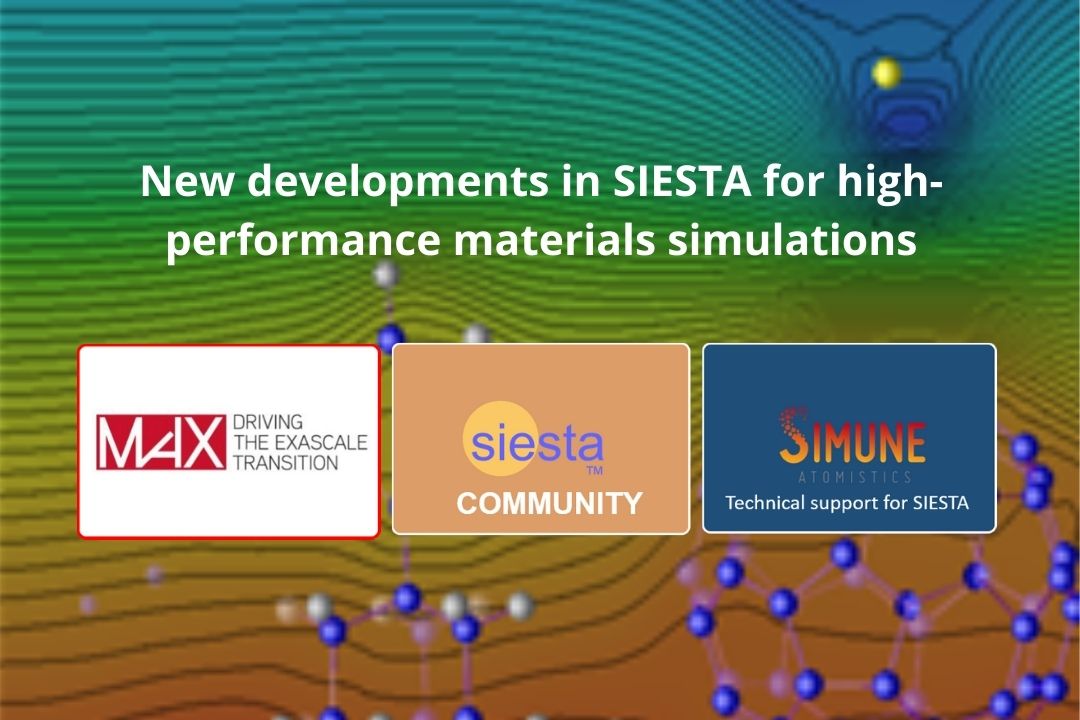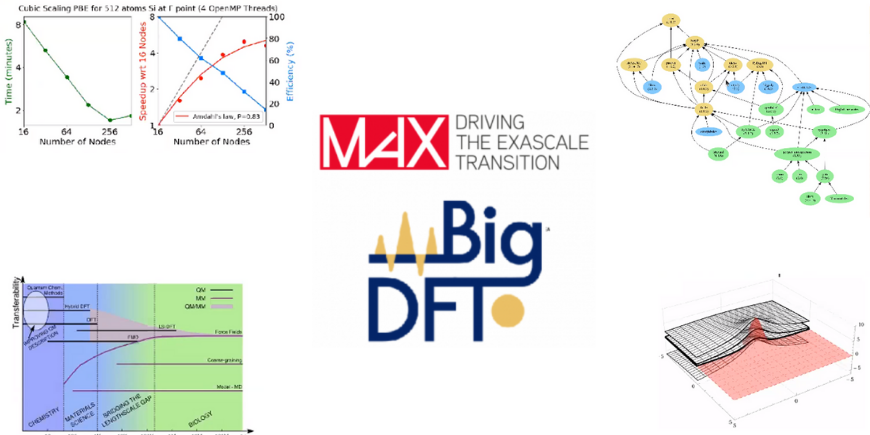FLEUR Webinar - Highlights and Insights
On the 14th October, the 6th webinar of the MaX series on Flagship codes entitled “All-electron DFT using the FLEUR code” was held, focusing on material simulation codes in the HPC environment.
The webinar was focused on basic features and fundamentals of FLEUR code, from its applicability in electronic, magnetic and atomistic structure of complex materials. The webinar started with an introduction of FLEUR functionalities and the use of the FLAPW method, continued providing examples of MaX applicability on large magnetic setup and it ended sharing the possible future applications of FLEUR, providing the following takeaways:
- What is the theoretical background on which FLEUR code is built on and the environment of application;
- How FLEUR application can be used on large magnetic setups;
- Future developments of FLEUR.
The three speakers of the webinar are the main developers of FLEUR code in Forschungszentrum Jülich institute.
The first speaker and moderator was Gregor Michalicek, who made an exhaustive introduction on FLEUR applications in DFT contexts, hightlighting its strenghts and challenges.
The second speaker was Uliana Alekseeva, who provided detailed examples on how FLEUR can be used in large magnetic environments.
The last speaker was Daniel Wortmann, who illustrated the FLEUR suitable architectures and future developments to be implemented.
Key takeaways
This webinar was very well received with a total of 100 live participants (out of 132 registered participants) coming from 32 countries around the globe: 14 EU and 18 Non-EU. Majority were from Germany (33%), respectively followed by India (12%), the USA (10%), France (6%) and Italy (5%). See the complete participants' distribution on the figure below.


During the webinar, some live poll-questions were posed to the audience to better understand the participants’ average engagement and familiarity with DTF calculations. The following graphs display the main outcomes pulled out from the short surveys:
Question 1: Question 2: Question 3:
Highlights
FLEUR (Full-potential Linearised augmented plane wave in EURope) is an open source code highly used for complex magnetic system simulations and its main environment of application is focused on the interplay of atomic, electronic and magnetic structure.
FLEUR code distiguishes from the other MaX ones for its basis set and the treatment of the electrons, as it is based on linearised augmented (FLAPW) plane waves and it uses all electrons.
The biggest strengths of FLEUR can be summarised as follow:
- Produce high possibility of precise reference results;
- High accuracy in DFT simulations;
- Perform as a versatile tool that can be used on several machines (Intel toolchain/gcc, Gfortran, PGI/NVIDIA compilers) and libraries (MPI, HDF5, LibXC, SpFFT, Wannier90);
- Compatibility with the AiiDA environment.
On the other side, the main challenges of FLEUR are linked to the complicated expressions used due to sophisticated basis (stress tensor, phonons). So, it still represents a topic that can be addressed only by experienced users.
For the future, FLEUR development will be focused on tuning it on current and future HPC architectures, including more advanced implementations on GPUs, stability and interoperability with AiiDA for more complex workflows and improvement of user's experience.
To learn more about FLEUR code, inputs and basic usage, visit www.flapw.de.
If you missed the MaX webinar on FLUER code, click here to watch the recorded webinar and download the speakers’ slides.
www.max-centre.eu I @max_centre2 I IN/company/max-centre



